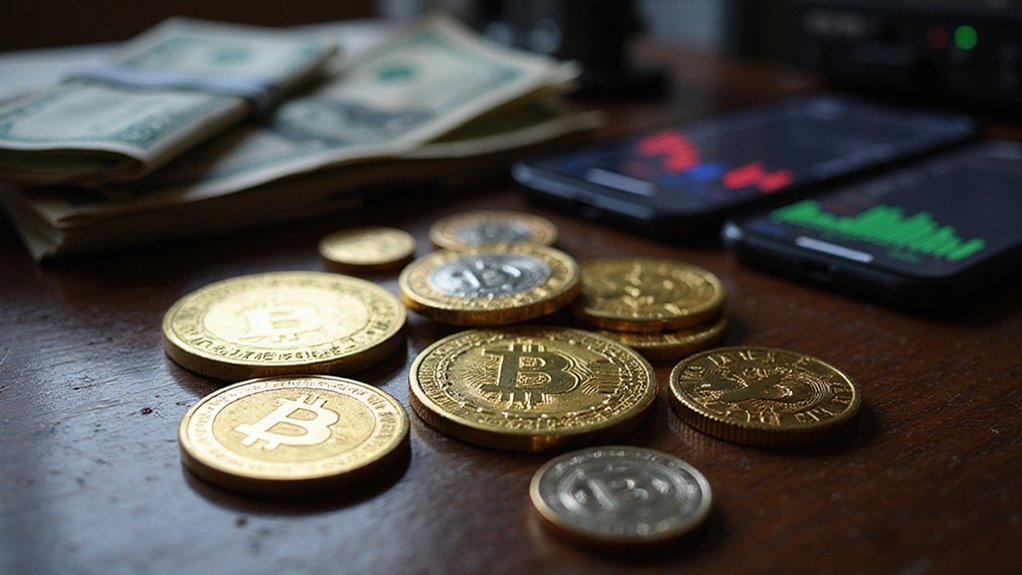Smart contracts are self-executing digital agreements that automatically enforce terms through blockchain code, eliminating traditional intermediaries like lawyers and banks. These programs operate using if/then logic—when predetermined conditions are met, the contract executes automatically across distributed networks. While they promise reduced costs and enhanced transparency for applications ranging from supply chain management to real estate transfers, their immutable nature means coding errors can create spectacular vulnerabilities that regulatory frameworks struggle to address effectively.

The digital revolution has spawned many curious offspring, but few possess the peculiar combination of mathematical precision and legal aspiration found in smart contracts—self-executing digital agreements that live on blockchain networks and enforce themselves with the relentless efficiency of a particularly pedantic accountant.
These coded covenants operate through elegantly simple logic: “if/when…then…” statements that would make Aristotle proud, automatically triggering predetermined actions when specified conditions materialize. Unlike traditional contracts that rely on lawyers, courts, and the occasional threat of litigation, smart contracts eliminate intermediaries entirely—a development that has presumably caused considerable consternation in certain professional circles.
The mechanics prove surprisingly straightforward. Smart contracts reside on blockchain networks where distributed computers verify and execute their instructions with Byzantine fault tolerance that would impress even the most paranoid systems administrator. Once deployed, these digital agreements become immutable monuments to their creators’ coding prowess (or occasionally, their spectacular oversights). They are permanently etched into the blockchain’s distributed ledger. Upon completion of each transaction, the blockchain receives an update that creates immutable records resistant to modification or tampering.
Their applications span industries with remarkable versatility. Supply chain management benefits from automated transparency that tracks products from origin to consumer, while financial transactions execute without traditional banking intermediaries—though one suspects banks are developing their own blockchain strategies with characteristic enthusiasm. Real estate transfers, healthcare record management, and voting systems all demonstrate smart contracts’ capacity to automate complex processes while maintaining cryptographic security.
The advantages are compelling: reduced transaction costs, enhanced transparency, elimination of counterparty risk, and automation that operates with mechanical reliability. Every participant can audit transaction histories, creating trust through transparency rather than reputation—a paradigm shift that challenges fundamental assumptions about commercial relationships. Despite the term “smart contracts,” these programs contain only code rather than traditional legal language or contractual terms. Proper management of smart contract inputs becomes crucial for ensuring these digital agreements execute with the intended precision and security.
However, limitations persist with characteristic stubbornness. Code complexity creates vulnerabilities that hackers exploit with depressing regularity, while regulatory frameworks struggle to accommodate these hybrid legal-technological constructs. Scalability constraints limit deployment scope, and interoperability between different blockchain platforms remains frustratingly elusive.
Smart contracts represent a fascinating experiment in automated governance, combining computer science with legal theory in ways that would have seemed impossibly futuristic just decades ago. Whether they fulfill their transformative promise or remain an intriguing technological curiosity depends largely on solving their current technical and regulatory challenges.
Frequently Asked Questions
Can Smart Contracts Be Modified or Updated After Deployment on the Blockchain?
Smart contracts, despite their “immutable” billing, can indeed be modified through proxy patterns—a somewhat ironic workaround to blockchain’s vaunted permanence.
Developers deploy proxy contracts that delegate calls to implementation contracts, enabling seamless upgrades while preserving user addresses and state data.
OpenZeppelin’s frameworks facilitate this process, though one might question whether truly “immutable” systems requiring such elaborate backdoors deserve their decentralization credentials.
The upgrade capability demands rigorous testing protocols.
What Programming Languages Are Commonly Used to Write Smart Contracts?
Smart contract developers primarily utilize Solidity for Ethereum-based applications, though the landscape has diversified considerably.
Rust dominates non-EVM blockchains like Solana and Polkadot, offering superior performance despite its notoriously steep learning curve.
JavaScript and Python have emerged as accessible alternatives, particularly on platforms like Hyperledger Fabric.
Go remains relegated to protocol development rather than contract programming.
The language choice ultimately depends on the target blockchain’s architecture and the developer’s tolerance for complexity.
How Much Does It Cost to Deploy and Execute Smart Contracts?
Smart contract deployment costs range dramatically—from $10 for basic contracts during favorable network conditions to $50,000 for complex implementations on Ethereum.
Gas fees fluctuate with network congestion and cryptocurrency volatility, while contract size and complexity drive storage costs higher.
Beyond deployment, execution fees accumulate with each transaction, audit expenses reach $5,000-$15,000, and maintenance requires ongoing investment.
Alternative blockchains like Polygon offer more palatable fee structures than Ethereum’s notoriously expensive network.
What Happens if There’s a Bug in a Smart Contract’s Code?
When bugs infiltrate smart contract code, the consequences range from mildly embarrassing to catastrophically expensive.
Unlike traditional software where patches arrive with morning coffee, blockchain’s immutability means errors become permanent fixtures—funds can vanish into digital voids, logic gates malfunction spectacularly, and millions evaporate faster than venture capital at a crypto conference.
The only remedies involve deploying entirely new contracts (assuming funds remain accessible) or watching helplessly as code executes exactly as written, not as intended.
Are Smart Contracts Legally Binding and Enforceable in Courts?
Smart contracts occupy a legal gray area where enforceability depends heavily on jurisdiction and specific implementation.
While many states now recognize blockchain-based agreements as legally valid, courts struggle with immutable, decentralized contracts that lack identifiable controlling parties—as demonstrated in *Van Loon v. Department of Treasury*.
Mutable contracts fare better legally, though the fundamental tension between autonomous code execution and traditional contract law’s flexibility remains unresolved.









